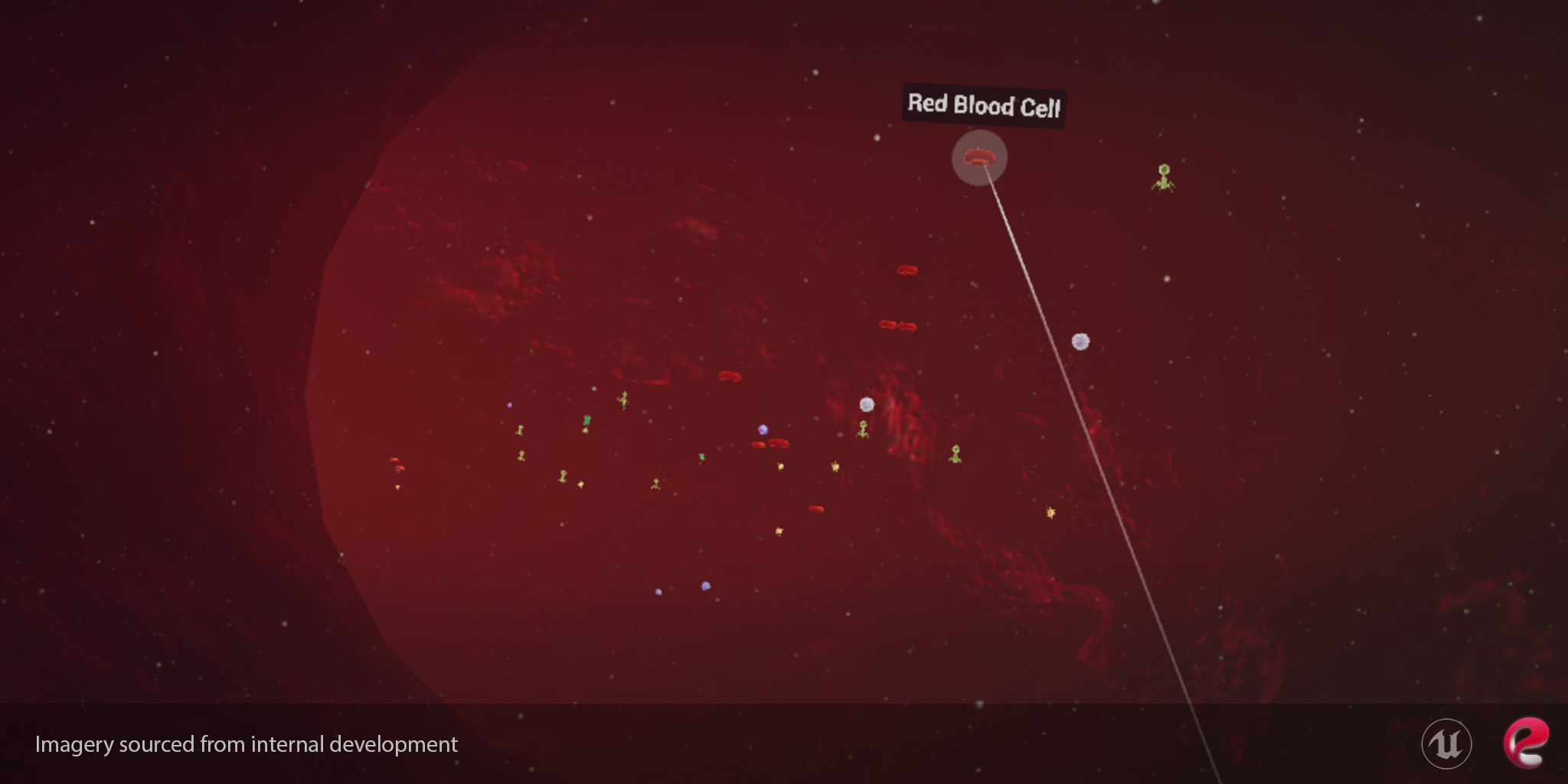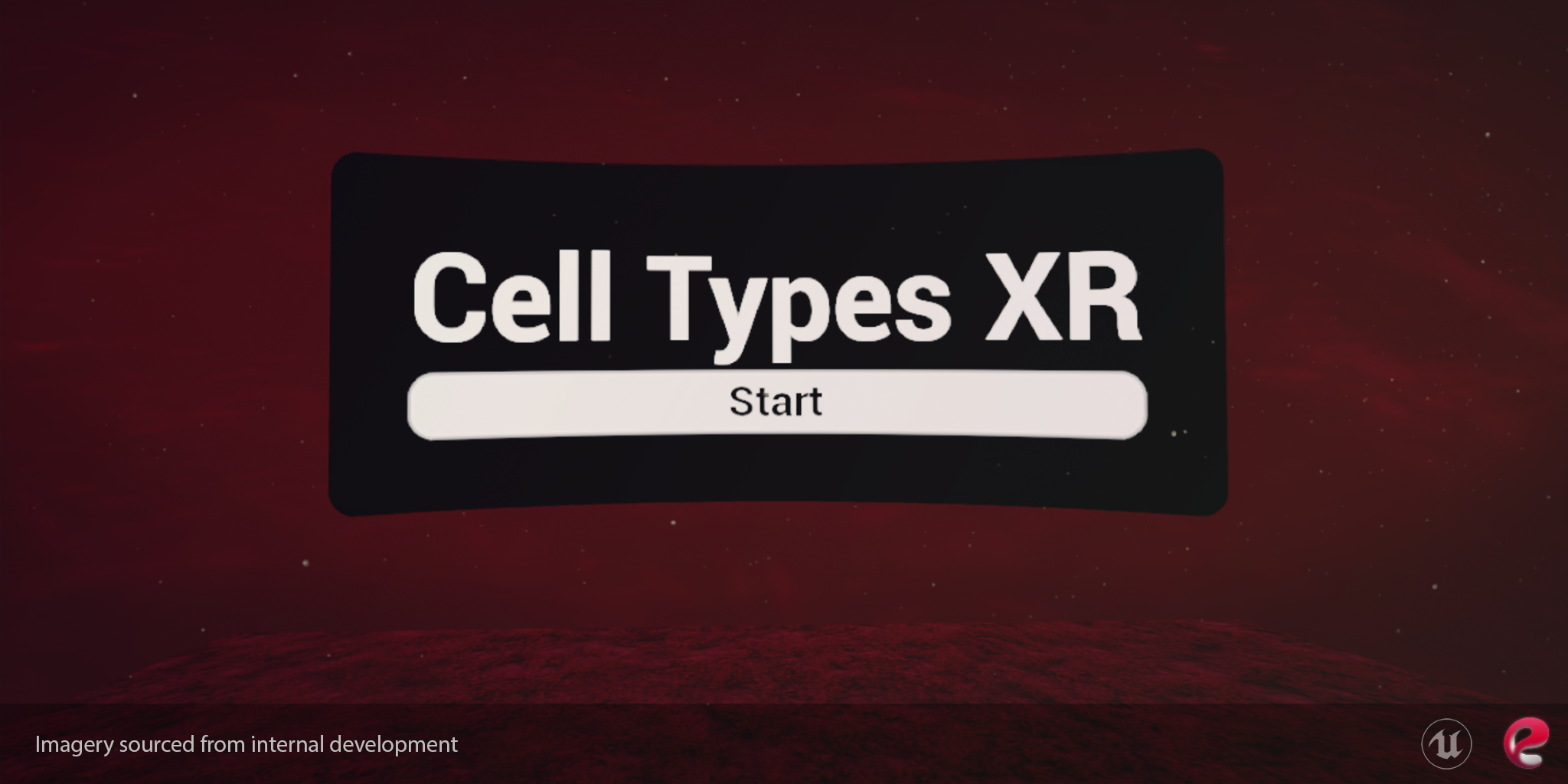The Building Blocks of Experiential VR
Here at Elara, we understand that the core of any VR experience is its capacity to engage users in a way that other mediums cannot – to be physically present within a virtual space and interact with the world as if you were actually standing in it. This sense of presence acts as the launching point for experiential learning, giving way to natural learning moments that come about through user interaction. In other words, we’re in the business of creating experiences that involve users with your message. All of this sounds great on paper, but how would one even go about incorporating these learning moments? And what does it mean to build a ‘space’ in VR?
Transport Anywhere
One of the biggest strengths of VR comes from its ability to take you, virtually, anywhere. Be it shrinking to the size of a molecule, or scaling our solar system down to fit in your room, you can take your user wherever you want. This concept is vital to consider when crafting your narrative. Where would it best make sense to tell this story, and how could VR take me to spaces that I couldn’t normally reach?
With a location established, we can take the concept of ‘anywhere’ a step further, and begin to look at the various scenarios that we might want to display, to further accentuate our narrative. How would a healthy anatomy compare to its complications? How would the application of our device/technology alleviate these conditions?
Once both of the above have been considered, the answer to where our ‘space’ in VR takes place can be answered.

The Basics of Interaction
Elara’s time in XR has helped guide us towards a better appreciation for what interaction can do to pull users in and make them engage with their virtual space. As such, one of our biggest goals for interaction within experiential VR is to ensure that we’re maximizing the number of time users spend interacting while minimizing the learning curve of complicated gestures. Again, the goal is to get users engaged with your experience, with as few barriers to those learning moments as possible.
An example of this would be the tried and true ‘point and click’, our ability to point with our hand and press a button on the controller within VR. Even this, which we believe to be one of the simplest forms of interaction, is a barrier that we have to take into account for users who might be completely unfamiliar with VR. The time it takes to familiarize all users with this mechanic, however minimal it might seem, usually happens right at the start, through some sort of ‘play’ button that will require users to ‘point and click’. This ensures that the user understands how to interact before the experience has even started.

This minimizes the amount of time your user spends learning how to interact, and more time actually engaging. Even with this basic form of interaction, the door is suddenly opened to a variety of ways a user can get involved:
>Hovering your pointer over a glowing object to learn more about it
>Pulling the hovered object to your hand with the press of a button
>Clicking on a marker in the distance to teleport yourself over to a new vantage point
>Navigating through traditional UI, such as a pause button or navigation menu
>Moving your hand controller to influence, or adjust, the scene around you

Learning Through Experience
When someone takes off their headset, Elara is ultimately striving for these users to come away feeling engaged, informed, and entertained. We believe VR offers people a chance to step into environments that would otherwise have no way of showing up on a showroom floor and provides an intuitive avenue for folks to reach out and engage with your message. The hard part has been, and perhaps always will be, determining how your story can best be told in VR.
About Elara
Based in Northern California, Elara is a strategic creative agency that develops digital content for medical and industrial markets across the globe. For 20 years, Elara has partnered with clients to develop creative solutions to showcase their vision and transform digital content mediums – including virtual reality, mixed and augmented reality, 3D, and video. They specialize in creating deeply interactive experiences for teaching, training, marketing, and sales. For more information, all parties should contact us at information@elarasystems.com.
